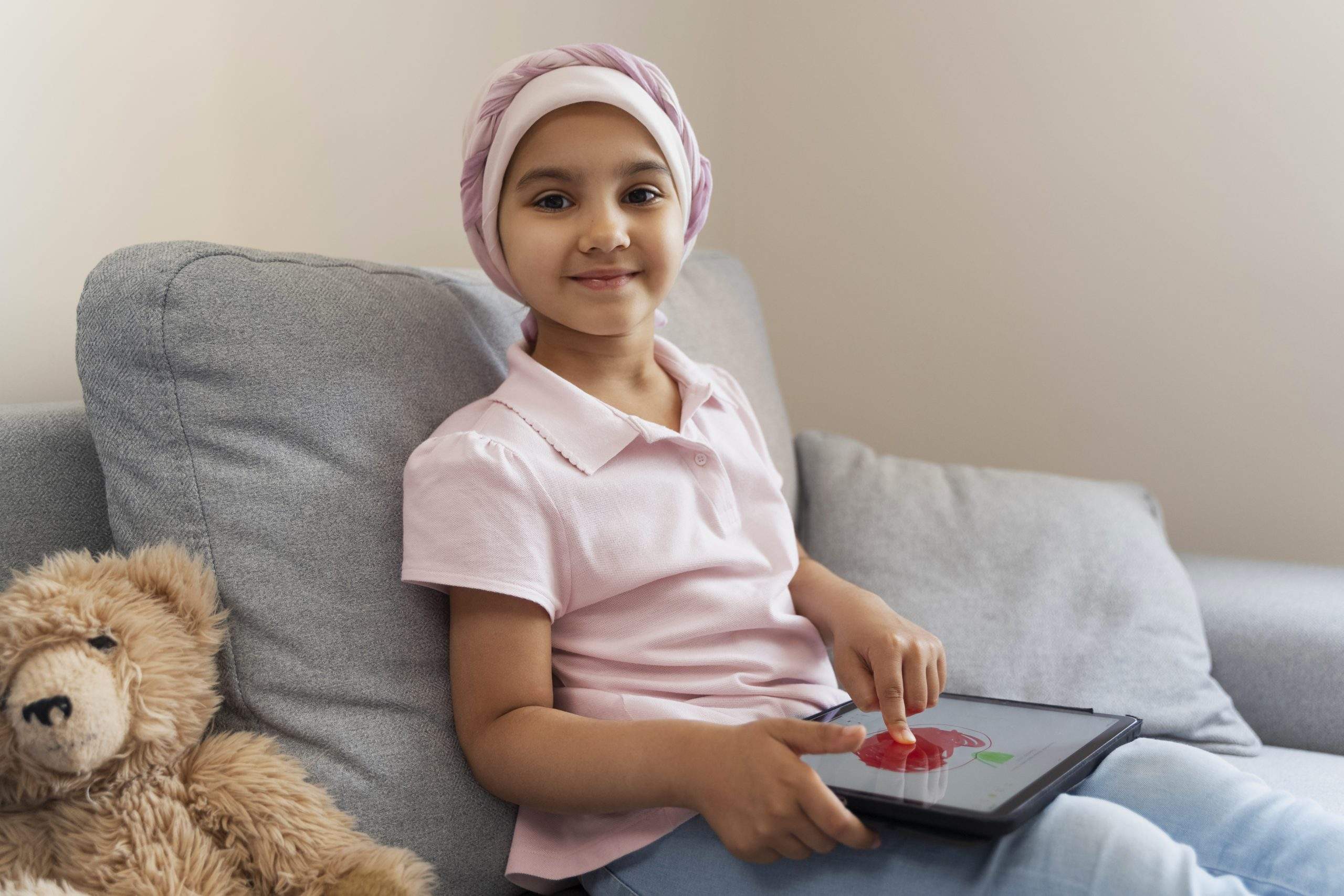It’s Longterm effect & ways to prevent treatment related complications
Incidence of CNS tumours account for 20% to 25% of all malignancies that occur in children.
There are many etiological factors for development of paediatric CNS tumours. Besides genetic predisposition ionizing radiation used for diagnostic and therapeutic purposes contribute to its development, though a small percentage.
Over the decades the management of pediatric tumors have changed and improved significantly. Improved and precise surgical resection because of improved diagnostic tools with improved neuro surgical technique makes many hitherto inoperable cases operable. Improved radiotherapy techniques and safe chemotherapy regimens and regular updation of treatment contributed by national and international clinical trials lead to improved outcome in children and adoloscents with CNS tumors.
Radiotherapy for Pediatric Tumors:
Though radiotherapy is an essential part of CNS tumor treatment, it has a lot of long term sequalae. Over the years the radiotherapy techniques have been designed and improved to reduce the long term side effects.
Long-term effects of radiotherapy:
Quality of life may be compromised by long-term effects of radiotherapy.
Neurologic deficits were common due to surgery or tumor itself, though NF1 patients are more susceptible.
Radiotherapy directly and modulated by some other factors is responsible for many after effects. Children may develop neurologic deficits, neurocognitive and behavioural effects, endocrine dysfunction, vasculopathy and development of second tumors.
Neurocognitive sequelae:
It is now known that myelinization and functional maturation of CNS continue well into adolescence and young adults. Through its effects on microvasculature as well as oligodendrocyte precursors radiotherapy causes disrupted neurogenesis and cortical atrophy. Patients fail to acquire new knowledge and skills. Magnitude of deficit depend on age at treatment, host factor like NF1, tumor location, hydrocephalus or not and treatment factor, e.g. radiotherapy volume and dose, use of chemotherapy, all plays role.
There is evidence that intervention with cognitive and behavioural therapy or pharmacotherapy and even exercise may be useful and should be started as soon as possible after treatment for best results.
ENDOCRINE DEFICITS:
Endocrine deficit is common after radiotherapy. But many patients might have developed due to surgery or tumor itself and sometimes modulated by chemotherapy. Radiotherapy leads to growth hormone deficiency and it correlates with dose to hypothalamic pituitary axis. Hypothyroidism seen after craniospinal irradiation. Direct and indirect effects of radiotherapy on Musculo skeletal system and osteopenia is a common findings and with significant risk of fracture. Cardiovascular along with cerebrovascular events and coronary heart disease also implicated with radiotherapy, though its etiology is multifactorial.
STRATERGIES TO AVOID:
Avoidance of radiotherapy altogether, like in low grade astrocytoma where surgery alone suffices.
Delaying radiotherapy in children by use of chemotherapy (e.g. those younger than age 3-8)
Increasing safety margin by using daily anaesthesia, by rigid immobilization technique (e.g. rigid casts or stereotactic frame) and for daily pre-treatment image verification. These all improve the safety margins.
Image based treatment planning using computed tomography (CT)/MRI or CT-MRI functional imaging co registrations and better treatment planning and delivery techniques results in greater sparing of normal brain and organs at risk
Use of new radiation modalities like proton therapy, provide even more sparing of surrounding normal brain and organs at risk
Use of reduced radiotherapy target volumes when it is safe to do so (e.g. tumour bed rather than whole posterior fossa boost in standard risk medulloblastoma).
Reduction in radiotherapy dose:
In medulloblastoma (standard–risk) CSI dose 35-36Gy (North American Study) reduced to 23.4Gy and currently 18Gy to children younger than 8 years
Smaller fraction size where appropriate
- e.g. 1.5Gy/fraction for patients with radiosensitive tumors such as germinoma,
Use of hyper fractionation radiotherapy (HFRT)
- e.g. For standard risk Medulloblastoma in current European studies
PREPARATION FOR RADIOTHERAPY:
It is technically challenging and labour intensive for the entire team. There are pediatric nurses and play therapists to encourage children to lie still for making immobilization devices, radiotherapy planning procedures and for treatment. Daily anaesthesia is often resorted to for children younger than 4-5 years .Skilled pediatric anaesthetists is helpful without support of operating room.

Written by
Dr. Chitta Ranjan Kundu
MD, Radiation Oncologist
Mahatma Gandhi Cancer Hospital and Research Institute, Visakhapatnam







